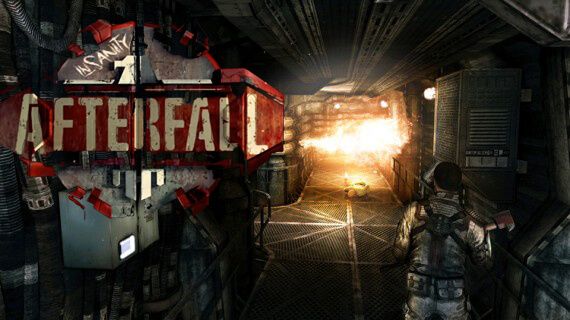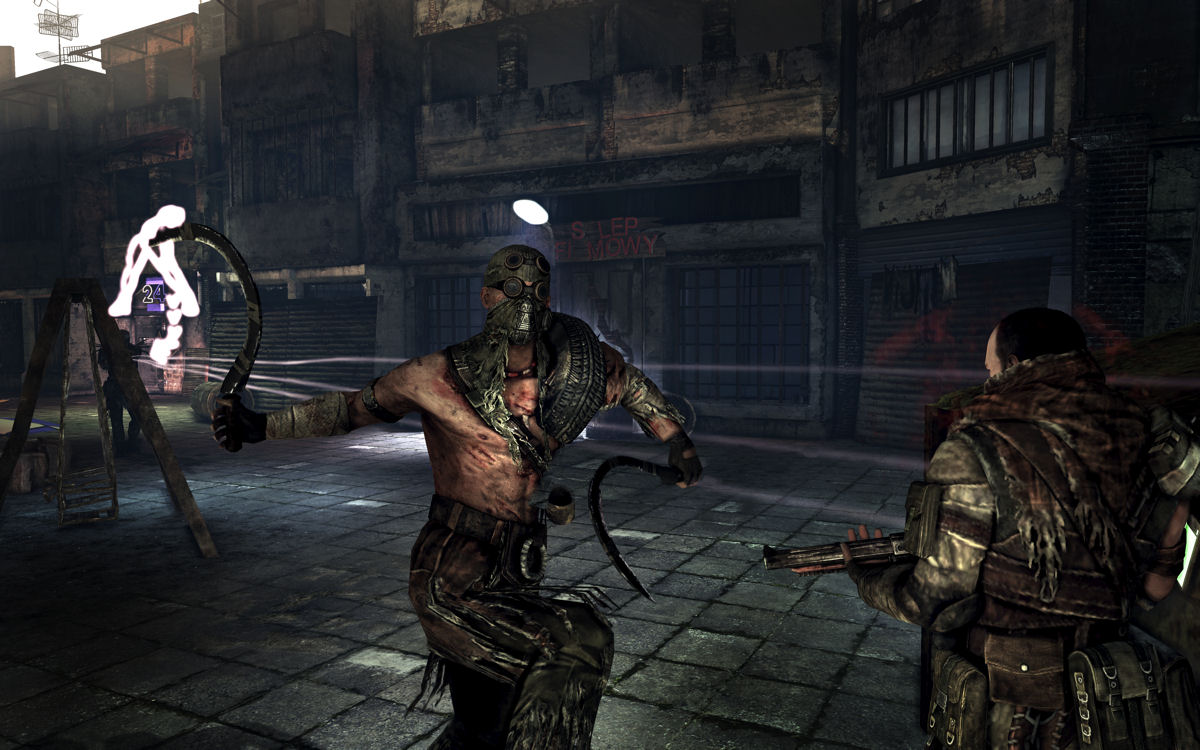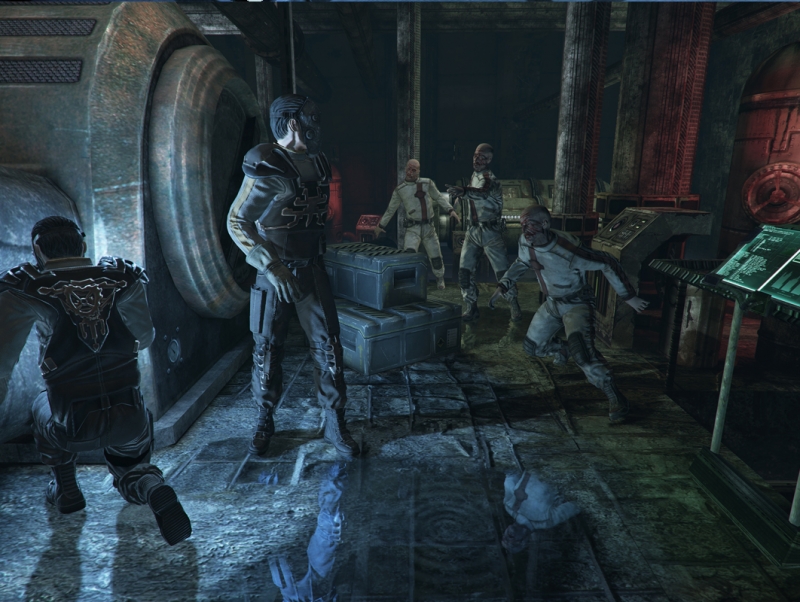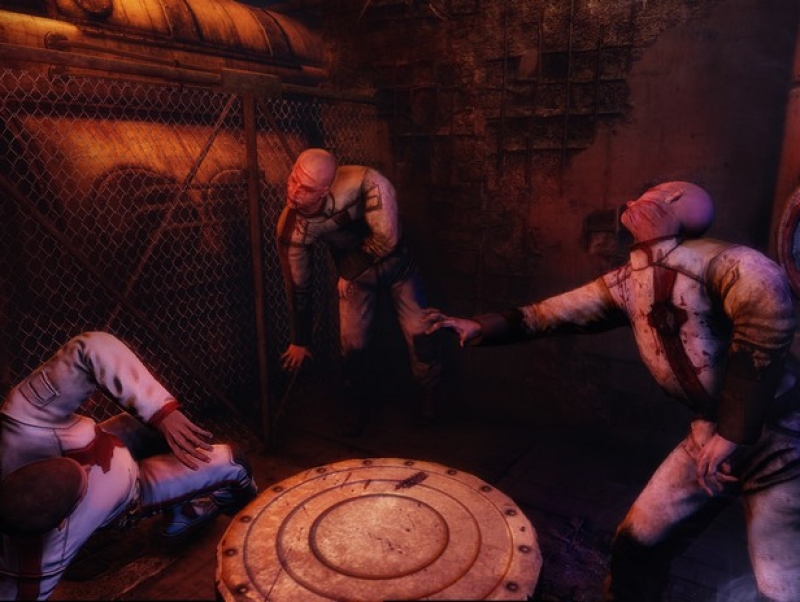

Never too recycled or banal, certain tracks will get a player's heart racing and pull them into the scene - especially when combined with quick-time events that heighten the excitement. It's a cool conditional mechanic that amps up the creep factor significantly and will have players scrambling to defend against the attacks of dark creatures - and they will attack. Everything players see and hear may betray them, aiming becomes shaky and the screen distorts a bit. When lighting is poor, more than just vision is impaired - as stumbling around in the darkness allows fear to take hold. Footsteps, maniacal ravings, machinery and other spooky ambient noises will make players dread turning any corner. The environments and tone make perfect use of sound to keep players on edge and grounded in the experience.

The game is filled with all manner of things that go bump in the night - and bump they do. The atmosphere in Afterfall: InSanity is one of the game's strongpoints. Ammo is spread liberally throughout and the controls are solid, making the game clearly more satisfying as a shooter than anything else. When guns are finally made available, the combat becomes a bit of a cakewalk, but can be a real relief when alone in especially dark spaces. The enemies, however, have a better handle on the system and gracefully attack in combinations players will likely never be able to master. Swinging fists or a found object, such as pipes, wrenches or axes, is sporadic and requires little skill or strategy. In terms of combat, enemies represent a range of mutant-like humanoids, some of which are grotesque, hulking monsters, and the player's only defense is a very shoddy combat system consisting of directional buttons - combined with a button for attacking and another for defense, as well as the ability to evade, or tumble (apparently parkour was required curriculum at Tokaj's alma mater). The often poor voice acting doesn’t help the problem. Exchanges and cutscenes, which are meant to add to the story, are tedious and succeed only in dragging the experience down. In fact gamers feel that same disconnect with the majority of characters they'll encounter. While the guards inexplicably attempt to arrest Tokaj, players are forced to simply go with it and, without a larger motivation, this makes for a disconnected and bland problem to overcome. We’re talking exploding heads with crowbars, violent - adding to a sense of darkness within the character. Immediately players are thrown into a confusing situation where their only choices are to fight back through unnecessarily violent means. As soon as they part he can’t shake the feeling something is wrong and is soon accused of an undisclosed crime, prompting the entire facility's security to come down on him.


In one of his sessions, the good doctor dozes off only to be woken up by a particularly whiny patient. Tokaj to keep together the sanity of the only known survivors of a ruined world. An often-clumsy script and monotonous combat can make playing a chore, but forging through can be rewarding and certain aspects make it a worthwhile experience.Īs the only psychiatrist in the community, it falls on Dr. While as an audience players realize there is more to this prison like facility with hints to a greater mystery to unravel, the beginning portions of the game don't do much to pique interest, something a good opener should. That's the grim setting of Afterfall: InSanity. The remaining humans have gathered in an underground shelter away from the harsh wasteland outside, attempting to simply survive in their new surroundings - but the yearning to return to their previous lives outside is strong and the shelter has its inhabitants feeling claustrophobic, cooped up. In a post apocalyptic world ravaged by nuclear bombs, the outside world has become inhabitable. Game Rant's Curt Hutson reviews Afterfall: InSanity


 0 kommentar(er)
0 kommentar(er)
